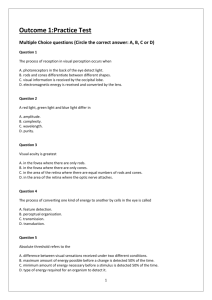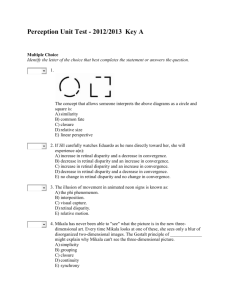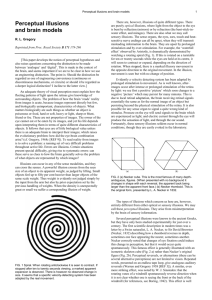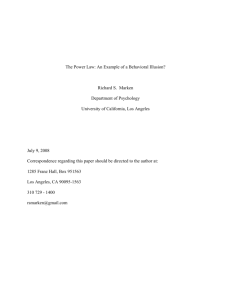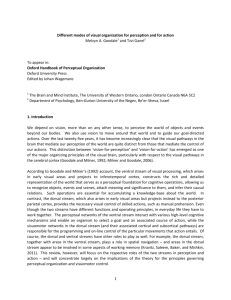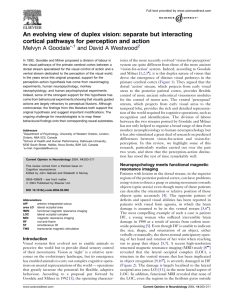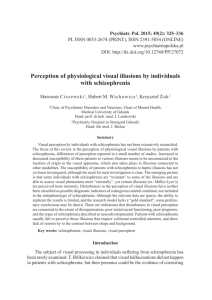PERCEPTUAL SET AND VISUAL PERCEPTION
advertisement
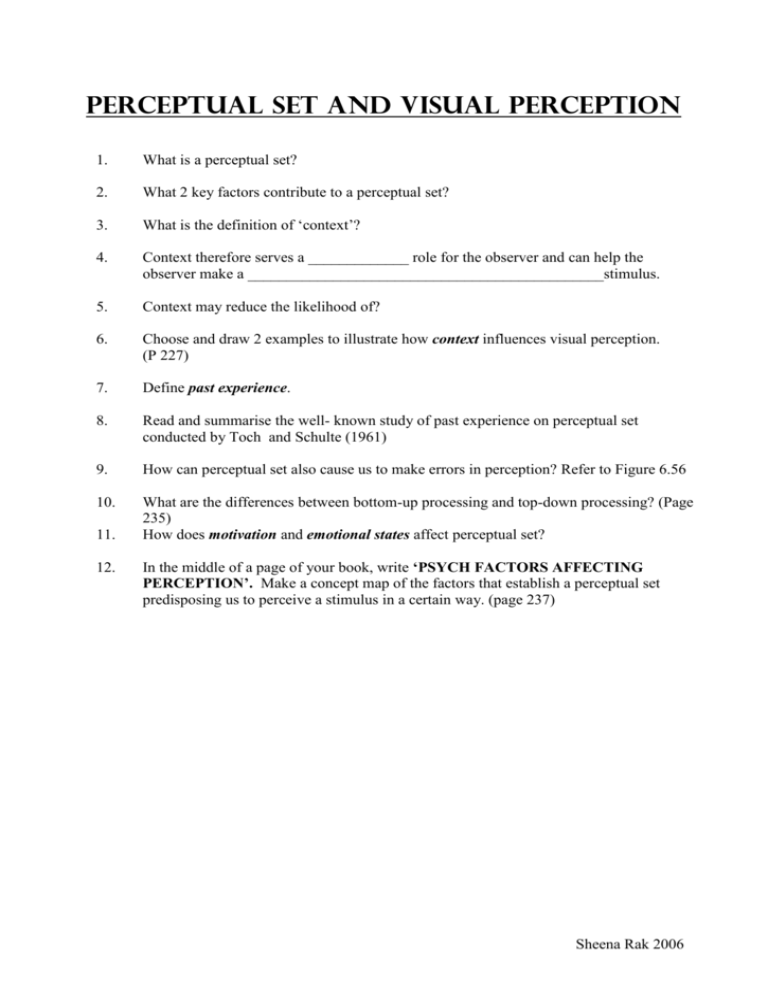
PERCEPTUAL SET AND VISUAL PERCEPTION 1. What is a perceptual set? 2. What 2 key factors contribute to a perceptual set? 3. What is the definition of ‘context’? 4. Context therefore serves a _____________ role for the observer and can help the observer make a ______________________________________________stimulus. 5. Context may reduce the likelihood of? 6. Choose and draw 2 examples to illustrate how context influences visual perception. (P 227) 7. Define past experience. 8. Read and summarise the well- known study of past experience on perceptual set conducted by Toch and Schulte (1961) 9. How can perceptual set also cause us to make errors in perception? Refer to Figure 6.56 10. What are the differences between bottom-up processing and top-down processing? (Page 235) How does motivation and emotional states affect perceptual set? 11. 12. In the middle of a page of your book, write ‘PSYCH FACTORS AFFECTING PERCEPTION’. Make a concept map of the factors that establish a perceptual set predisposing us to perceive a stimulus in a certain way. (page 237) Sheena Rak 2006 VISUAL ILLUSIONS 1. Our visual perception helps us make sense of a constantly ______________________world. 2. Is visual perception error free? 3. Referring to the Café Wall illusion (fig.6.60) on page 237 as an example, describe how visual illusions demonstrate cases in which reality is misperceived. 4. Why do most illusions occur? 5. Define an illusion. 6. Refer to page 240 – how do illusions differ from delusions and hallucinations? 7. When we understand how the illusion works, do we still perceive it the second time? 8. Draw the Muller-Lyer illusion in your book. 9. Copy out the definition for it. 10. Which 2 main explanations have psychologists generated to explain our perception of the lengths of the two lines in these illusions? 11. One explanation for the Muller-Lyer illusion is Perceptual Compromise - Ross Day (1989) Write out the definition on page 241 12. Summarise the key visual cues and the conflicting information that these cues provide (! -3) 13. According to Day how do we deal with all this conflicting information? 14. Refer to your handout from the Nelson textbook page 137. Another explanation for Muller-Lyer illusion is Gregory’s (1990) concept of apparent-distance hypothesis or size-distance invariance. 15. Write out the definition of the above theory. (Refer to page 218 fig.6.40 Grivas to help you) 16. Explain the illusion in terms of this theory – use diagrams if necessary. 17. A traditional South African Zulu does not experience the illusion – why is this so? THE AMES ROOM ILLUSION 18. Briefly describe the Ames Room. 19. If we watch a person walk from the back right-hand corner of the Ames room to the back left-hand corner of the Ames room, they appear to shrink. Explain why we perceive the person to be shrinking. 20. Why is the observers view restricted to a monocular one? 21. Explain the Ames room illusion with reference to apparent distance theory. 22. When looking at people crossing the room, shape constancy (of the room) is maintained at the expense of _____________ constancy, resulting in the perception of a person appearing to shrink as they cross from the right to the left of the room, or to grow if they crossed the room in the other direction. Sheena Rak 2006 . What does it say?? Are you sure? Face or word? Lovers or skull? How many legs? Sure? Here, Fido! Stare at this - how many BLACK DOTS can you see? Sheena Rak 2006
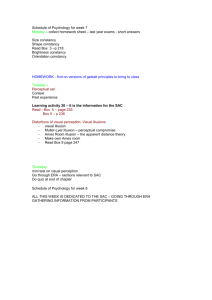

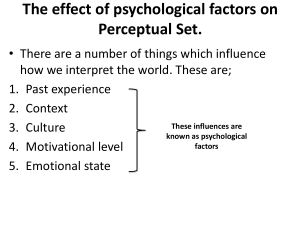
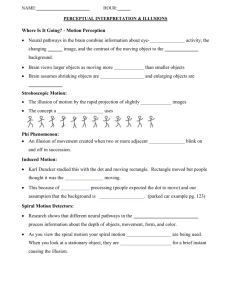

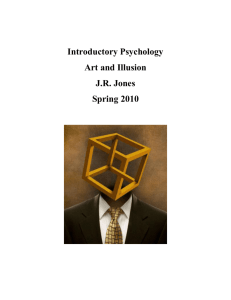
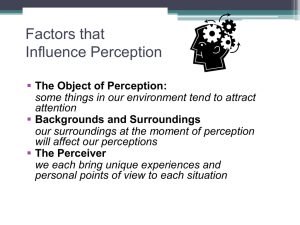
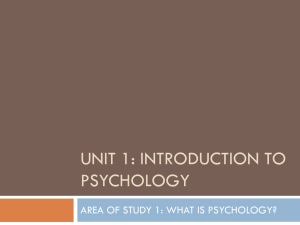
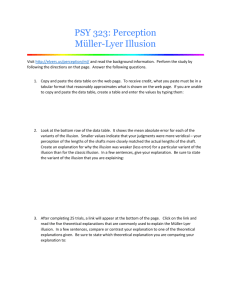
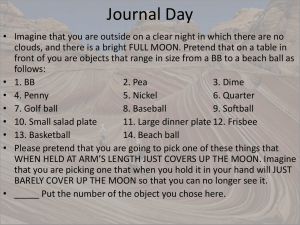
![AP PSych Visual System and Illusions Edited[]](http://s2.studylib.net/store/data/009950776_1-b8cd9619ab229bd9172dad054f824fad-300x300.png)
